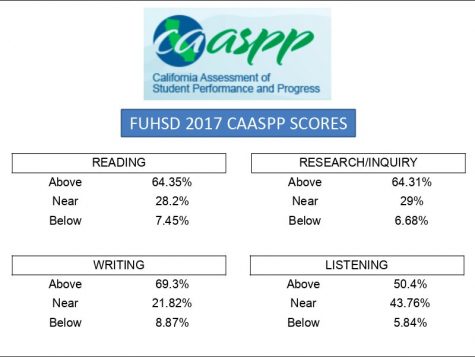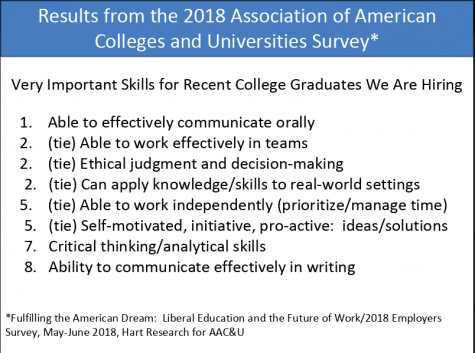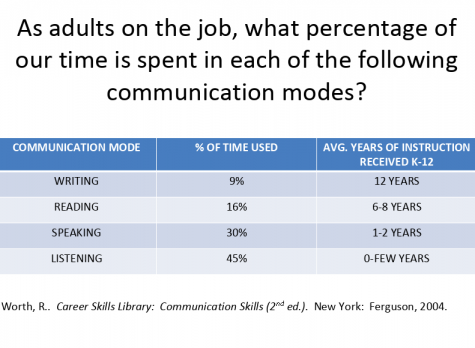Striving to improve the CAASPP results
FUHSD curriculum leads discuss their prespectives on putting further emphasis towards raising the listening scores
March 9, 2019
On Feb. 4, FUHSD English teachers attended a professional development session lead by English Curriculum Lead Greg Merrick about incorporating instruction on speaking and listening into literature courses. One part of the training included examining the results from the 2017 California Assessment of Students’ Performance and Progress (CAASPP) test, which shows listening as the area where FUHSD students have the most room for growth, with higher scores in reading, research and writing.
 FUHSD Curriculum Lead Welton Kwong assists teachers with learning more about the ever-changing field of 21st century education. Kwong reveals that these opportunities include research, examination of best practices and, of course, time for attendees to bounce ideas off each other and develop specific lesson plans.
FUHSD Curriculum Lead Welton Kwong assists teachers with learning more about the ever-changing field of 21st century education. Kwong reveals that these opportunities include research, examination of best practices and, of course, time for attendees to bounce ideas off each other and develop specific lesson plans.
Since the CAASPP test was developed in 2014, Kwong had no expectations for the listening test results, but he believes that the reason behind FUHSD’s “lower” performance on listening is due to the lack of emphasis on developing listening skills.
“I think, traditionally in schools, we have spent a lot of time on what we think of as literacy,” Kwong said. “Which means we spent a lot of time helping students become good readers and writers, but we sometimes forget that listening is also very much a part of language as well.”
Merrick agrees that providing lessons and assessments targeted at listening are often overlooked.
“I think [overlooking the listening aspect has] a lot to do with [us assuming] that because students can talk and they can hear,” Merrick said. “But it’s also important that we provide them with the opportunity and the skills.”
With the listening area identified, Kwong points out that the challenge with incorporating listening instructions within an already packed curriculum is due to the fact that a student’s writing and researching progress is visible on devices. English teacher Vanessa Otto agrees with Kwong.
“It seems as if employers are looking for your communication skills as being a priority,” Otto said, “We don’t really spend a lot of time assessing speaking and listening skills and that can be for a variety of reasons. The first thing that comes to mind is that it’s kind of difficult to assess.”
In order to improve the current curriculum and create heavier emphasis on listening, Merrick developed the all-day training session, which he is delivering four times over the course of two years so all FUHSD English teachers will get a chance to participate.
“The work around speaking and listening is not exclusive to English teachers,” Merrick said. “In fact, all teachers in our district over the last couple years went through a different training […] that really [encourages them] to think about supporting students’ ability to read, write but also speak and listen.”
Math Curriculum Lead Jessica Uy is also looking at ways to help math teachers incorporate specific, targeted practice with speaking and listening in math classes.

“For math right now, we’ve been focusing on students’ speaking and maybe even writing about their understanding,” Uy said. “I haven’t explicitly talked about the role of listening, although that might be an area we focus on for next year because how can you have a good conversion if people are not listening to each other?”
Kwong echos Uy and Merrick’s beliefs, and hopes to continue to build on this identified area of weakness so students can experience success in high school and beyond.
“It needs to take place everywhere for students to actually improve their language skills across all domains,” Kwong said. “So it’s everybody’s work. Hopefully we can do more of that in the future.”

















